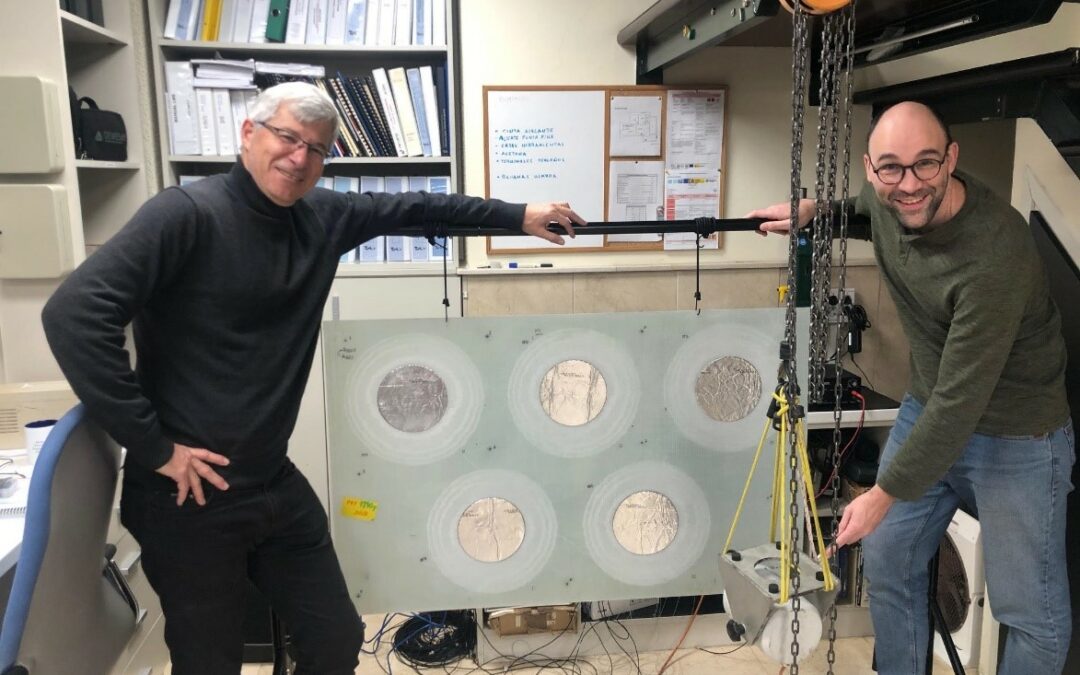It is a great pleasure to announce that IRT Jules Verne and TSI have recently executed the vibroacoustic tests for the verification and validation of the technology of Acoustic Black Holes aimed at noise reduction. This technology has been developed and adapted to the constraints of shipbuilding by IRT Jules Verne.
The noise can have negative environmental impacts affecting the living conditions of the passengers as well as damaging the health of marine animals of many types.
The noise can have negative environmental impacts affecting the living conditions of the passengers as well as damaging the health of marine animals of many types. One of the methods to mitigate the noise levels is the implementation of acoustic black holes (ABH) in FRP structures, Fiber Reinforced Polymers.
The aim of the vibroacoustic tests is to study how ABH affect vibratory behaviour of FRP-based panels. To address this task, the vibratory characteristics of FRP panels with different ABH patterns are determined by a vibration test. The results reveal that the inclusion of ABH led to a remarkable damping increase, which is a good indicator of the great capabilities of ABH for increasing damping. This technology can have applications for a dual purpose: 1st) To improve the comfort levels of the ships, and 2nd) to reduce the ship vibrational levels and alleviate the effect of resonance.
This technology can have applications for a dual purpose: To improve the comfort levels of the ships, and to reduce the ship vibrational levels.
The FIBRE4YARDs project has received funding from the European Union’s Horizon 2020 research and innovation program under grant agreement No 101006860.” Further information about the latest discoveries and great innovations carried out in the context of the FIBRE4YARDs project can be found on their website.

